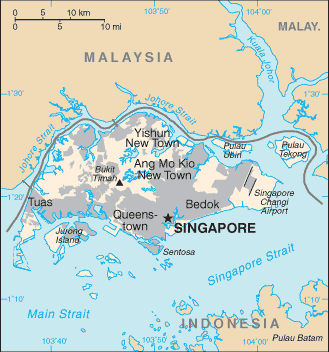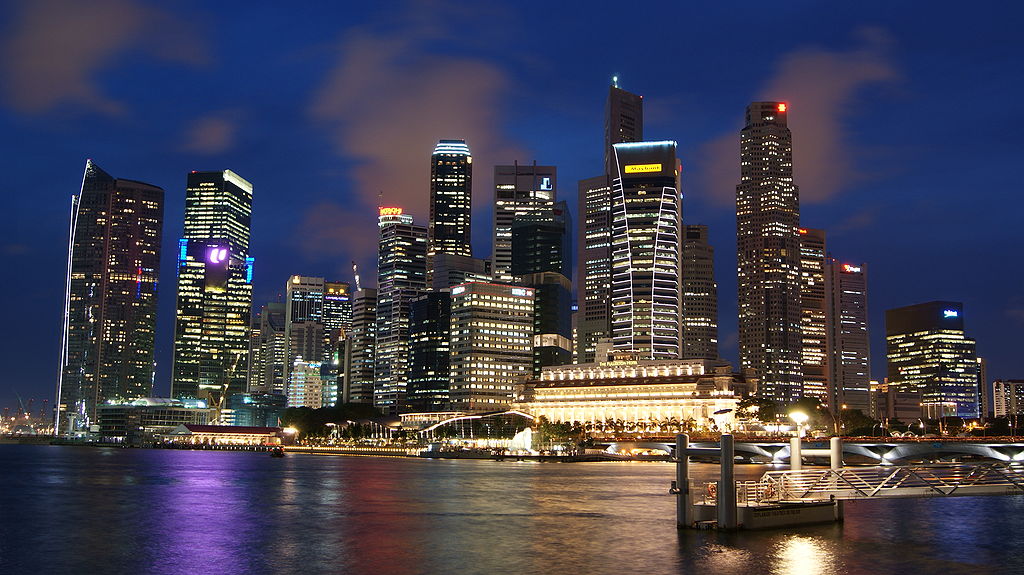News
Singapore’s wind climate
 Given CPP’s work on such high-profile structures as Singapore’s Marina Bay Sands resort, and having opened our Singapore office, we thought it would be interesting to highlight the unique wind climate of this city-state of 5.4 million people.
Given CPP’s work on such high-profile structures as Singapore’s Marina Bay Sands resort, and having opened our Singapore office, we thought it would be interesting to highlight the unique wind climate of this city-state of 5.4 million people.
Singapore’s location in southeast Asia means that it is subject to the seasonal variations of the regional monsoon. Monsoon refers to the regular ebb and flow of wind and rain that results from the uneven heating of land and water. In Singapore, a practical consequence of the Southeast Asian monsoon is that wind conditions can be roughly categorized according to the time of year.
- From December to March (northern winter), the Northeast Monsoon Season features winds that primarily approach from the northeast.
- From March to May, a pause in monsoonal activity offers a period of light sea breezes that exhibit little directionality.
- From June to September (southern winter), the Southeast Monsoon Season features winds that primarily approach from the southeast.
- In October and November, a pause in monsoonal activity offers a period of light sea breezes that exhibit little directionality.
These are, of course, generalizations, and day-to-day weather may vary considerably from this seasonal climate.
A more localized effect is the so-called Sumatra Squall. This is an organized line of thunderstorms that develops over the Indonesian island of Sumatra and moves eastward toward Singapore and Malaysia. Such thunderstorms may last up to two hours and feature wind gusts of more than 80 km/h (50 mph). The Sumatra Squall phenomenon is less common during the Northeast Monsoon than at other times of the year thanks to the prevailing winds that time of year.
Although monsoons are themselves large-scale sea breezes, the term sea breeze is usually reserved for the lighter, more variable winds that occur due to diurnal differences in temperature between land masses and the sea. Localized sea breezes can generate powerful thunderstorms, especially in the late afternoon, and such thunderstorms may be severe and cause damage to vegetation and structures.
The following table summarizes Singapore’s wind climate.*
Month | Mean wind speed | Max gust speed | Prevailing wind direction |
January | 2.6 m/s (5.8 mph) | 20.3 m/s (45 mph) | N/NE |
February | 2.8 m/s (6.3 mph) | 17.8 m/s (40 mph) | N/NE |
March | 2.1 m/s (4.7 mph) | 21.9 m/s (49 mph) | N/NE |
April | 1.4 m/s (3.1 mph) | 23.9 m/s (53 mph) | Varies |
May | 1.5 m/s (3.4 mph) | 18.1 m/s (40 mph) | S/SE |
June | 1.9 m/s (4.3 mph) | 21.4 m/s (48 mph) | S/SE |
July | 2.3 m/s (5.1 mph) | 23.9 m/s (53 mph) | S/SE |
August | 2.4 m/s (5.4 mph) | 21.9 m/s (49 mph) | S/SE |
September | 1.9 m/s (4.3 mph) | 21.4 m/s (48 mph) | S/SE |
October | 1.4 m/s (3.1 mph) | 20.3 m/s (45 mph) | Varies |
November | 1.3 m/s (2.9 mph) | 21.1 m/s (47 mph) | Varies |
December | 1.9 m/s (4.3 mph) | 17.2 m/s (38 mph) | N/NE |
*Climate statistics sourced from the National Environment Agency of Singapore.

